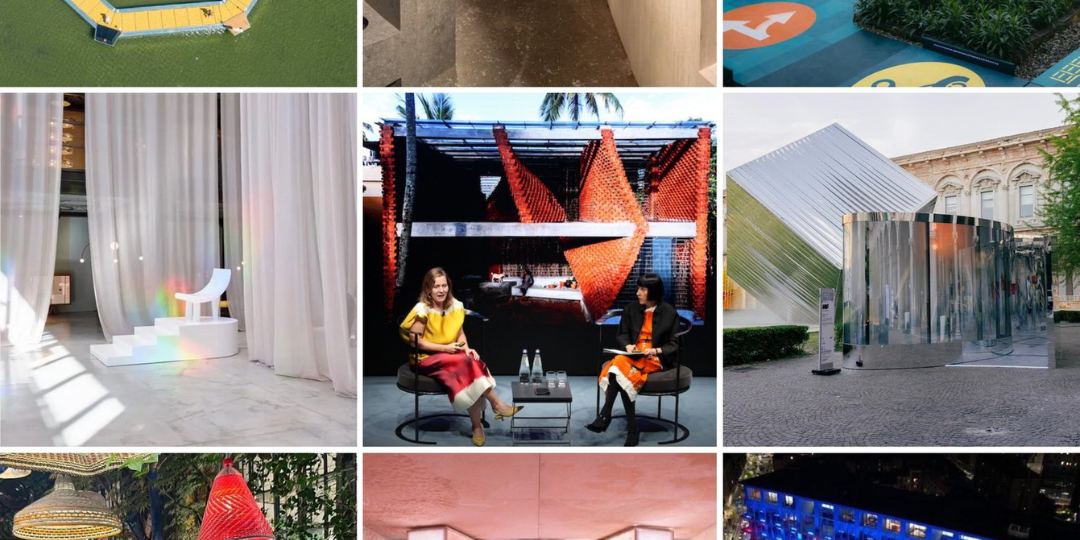Long-haul trends marked by the design seen at Fuori SALONE 23 in Milan
The centre of the design world is Milan, the city opens its “salons” to the 400,000 or so professionals who come to the many meetings and events that unfold in every corner of the city.
Transcendent messages prevail, those of vindication and a design revolution as the axis of environmental change. There is no talk of sustainability because it is assumed to be integrated in each project, in each piece created. Today there is a debate on human sensations, sensoriality and synaesthesia in interior design and objects, the new discoveries of “neurodesign” have dominated the symposium of the Prada Foundation, “Materials in Flux”.
This year the installations have proliferated, “Life has become a walk through multiple changing installations, a mirror in which to look at ourselves and analyse our identities through design”, as analysed by the director of the Triennale Museum and its curator, Marco Sammicheli. During the Salone, the Triennale has paid tribute to one of the most striking groups in the history of design, Droog Design.
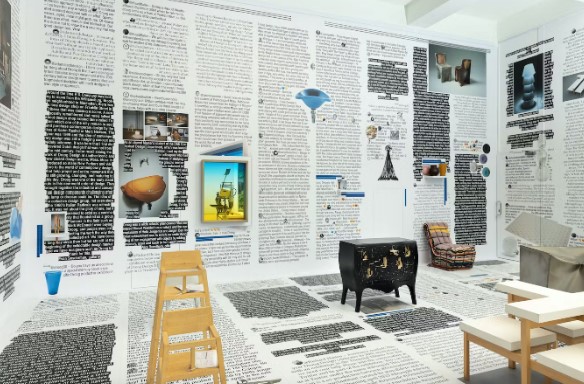
Droog Design Exhibition / Courtesy Triennale
Faced with the immensity of proposals, we focus on the FUORI Salone, an urban kaleidoscope in which we analyse three recurring visions, three transcendent trends.
- Invasive and immersive nature
During the pandemic, we humans stayed in our shelters and watched as nature invaded the cities and animals roamed freely.
In the same way, designers and architects propose to invade every space and corner of the human habitat with vegetal devices and artefacts that include natural plants, a way to awaken consciences and also to bring a new way of life connected to the plant world.
Botanical Garden committed
In the heart of Milan’s botanical garden, the Orto Botanico di Brera, the great architects and thinkers Italo Rota and Carlo Ratti have created “Walk the Talk”, a playful installation that invites us to explore the theme of transforming urban mobility in a sustainable way, putting people at the centre and stimulating a reflection on their relationship with the space in which they live and move.
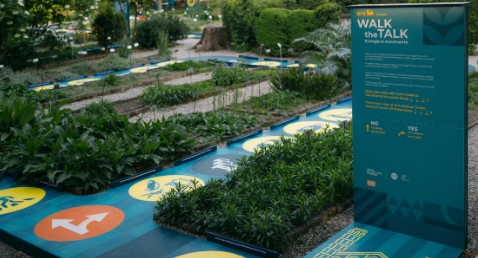
Orto Botanico educational facility / Courtesy ENI
Michele de Luchi makes us float through the Navigli
With the floating installation “The Sea Deck“, we were able to float above the city’s Navigli canals. The installation, designed by AMDL CIRCLE and Michele De Lucchi, tells the story of the desire to go beyond the expected and rediscover contact with nature. An exciting cantilevered pathway over the water of the Darsena.
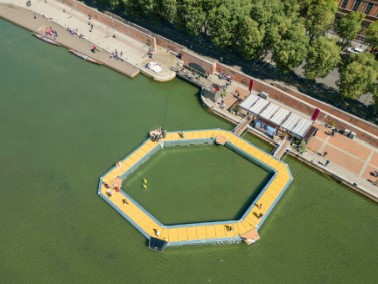
Installation Michele de Luchi / Courtesy AMDLCircle
The stone rules
Ellen Van Loon and Giulio Margheri of Studio OMA put stone at the centre of spaces. In a world where everything and everyone lives in a hurry, OMA and SolidNature invited us to enjoy the light of natural stone and its effects of connection with nature.
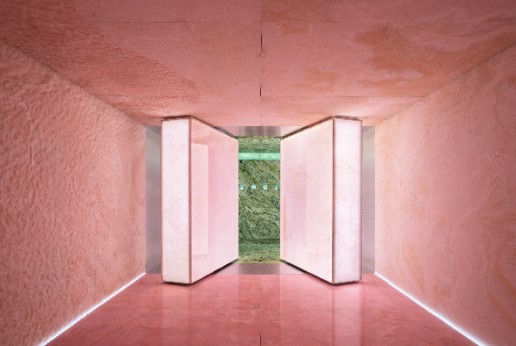
2. Sensoriality and synaesthesia
The new focuses of “neurodesign” determined by the major design research centres, the principles of Neural Design at MIT or Stanford University, are centred on the connection of design with the human senses. The new discoveries of the brain multiply the possibilities of digital or physical design to improve our way of life around spaces and elements of continuous use.
The Salone has demonstrated in various projects and exhibition forms a fascination with dreamlike, subtle, scenographic atmospheres that elevate the spirit between the tangible and the intangible.
The mystical bath
“Metamorphic” is an architectural and sculptural intervention that reinvents the position of the bathroom in interior design, challenging the perception of the bathroom as a hidden, purely functional space. Inspired by Tom Dixon’s fascination with new methods of modular construction in conjunction with Dekton the installation featured four modules of different sizes.
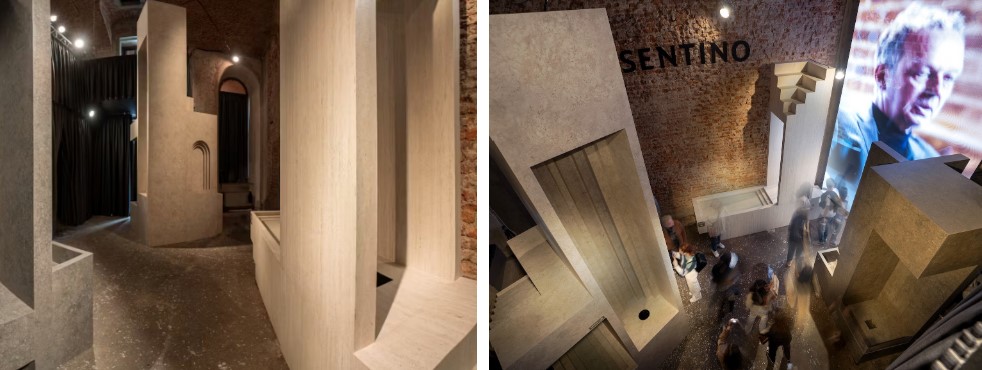
Tom Dixon / Courtesy Cosentino
Spiritual objects
The pieces designed by Objects of Common Interest for Nilufar DEPOT, receive the refraction of light in the form of rainbows. The virginal white colour dominates the space, silence and light.
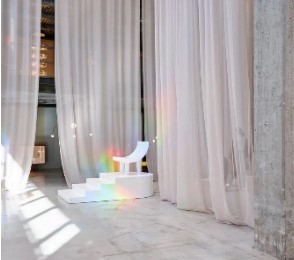
Courtesy Nilufar Depot
Odile and synaesthesia
Odile Decq, one of the world’s great architects, plays with the effects of synaesthesia on our body and on the perception of our senses in the spiral pavilion she installed at the “Statale” University, Whirlpool Swirl.

Installation Odile Decq / Courtesy Whirlpool
3. Claim and operational commitment
From the infinity of manifesto-projects around LIFE-CENTERED DESIGN we have chosen three of the most striking and relevant.
A cry in the silence
HELP! A vibrant and disturbing installation, a cry launched from architecture and design. The awareness-raising and outreach work of architect, designer and artist Cristina Finucci has been opening minds and hearts for years with the progressive project Garbage Patch State.
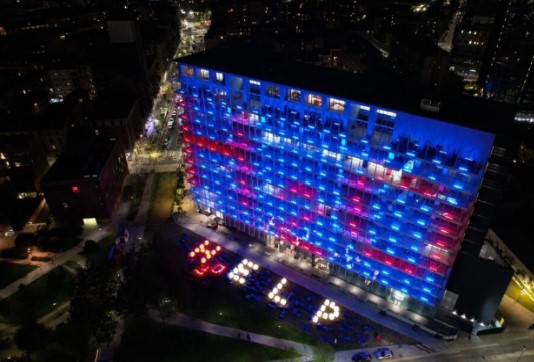
Instalación Cristina Finucci / Cortesía Garbage Patch State
Artesanía planetaria
The book 10 years of PET LAMP, was presented at the Rossana Orlandi Gallery. The journeys of Álvaro Catalán de Ocón, Sebastián Betanzo and Enrique Romero de la Illana, materialised in a book-manifesto around a project-message on the recovery of craftsmanship that has travelled around the world.
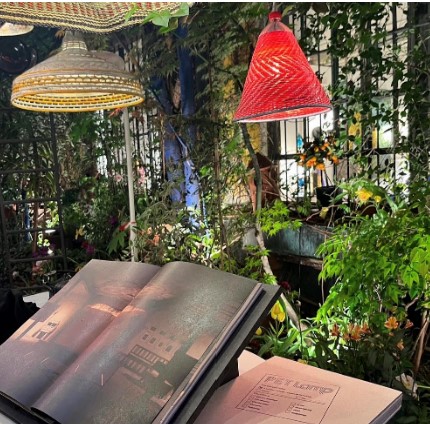
Book PET LAMP Gallery Rossana Orlandi/Photo M.S.
Material flows
“Prada Frames: Materials in Flux” is the central theme of the symposium held at the Fondazione PRADA, curated by Forma Fantasma. Materials in flux and their connection to human and planetary evolution. It is a highlight of research, exploration and intercommunication in order to inspire thoughtful and sustainable design in our ever-changing ecosystem. Among the participating thinkers and researchers, Beatriz Colomina, Alice Rawsthorne, Paola Antonelli.
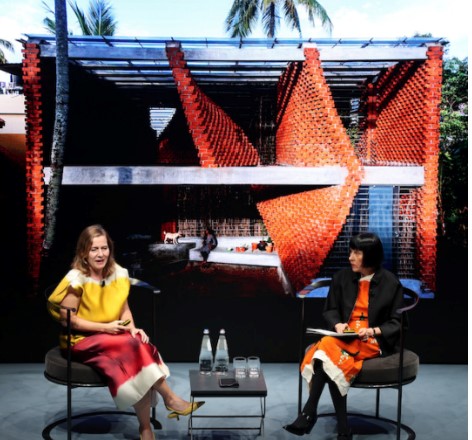
Alice Rawsthorne, Paola Antonelli en ‘Material in Flux’/ Photo M.S.
Article by Marisa Santamaría for the Silestone Institute.
